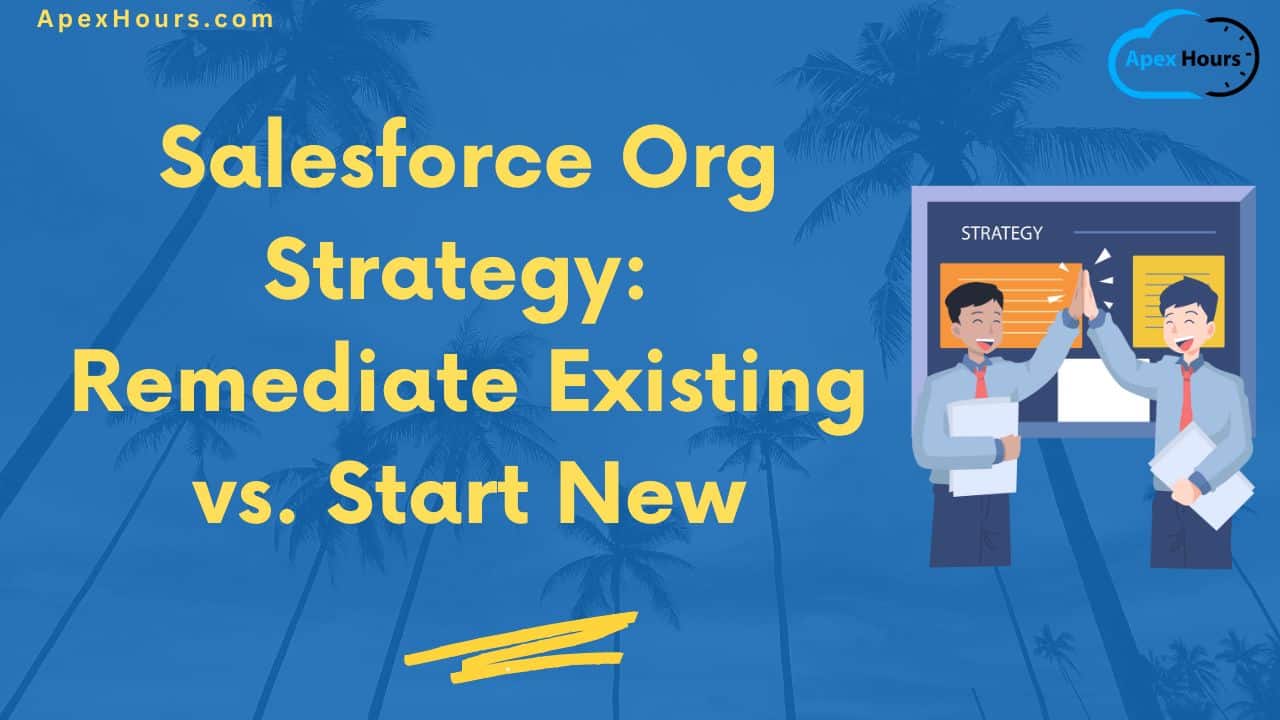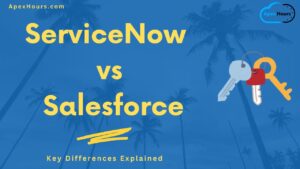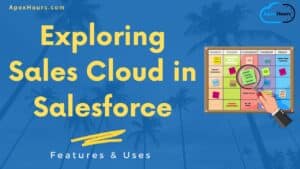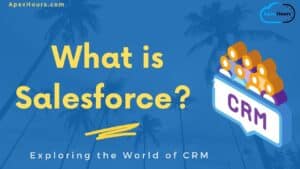If your Salesforce Org has been running for years, the tech debt may be adding up. If so, the question comes up whether it is better to remediate what you have or to go to a brand new Org. We will explore how to make that decision and get your arms around your technical debt. Check our session on Salesforce Org Strategy: Remediate Existing vs. Start New to learn more.
What Should We Do With Our Salesforce Org?
What Should We Do With Our Salesforce Org? This question might come to your mind when you have an 8 or 10-year-old organization having lots of Technical debt. Special when org are heavily customized and have poor user experience. Then only two below solution come in mind.
- Remediate: Fix the things in place.
- New: Start with a fresh Salesforce Instance
Typical Challenges We Hear From Our Customers
- We have hundreds of custom fields on core objects hitting governor limits.
- Instead of enabling innovation and a better experience for users, Salesforce is being viewed as a legacy tool.
- We don’t even know what’s in the code. Those Apex Classes are 11 years old. Pages hang
trying to get data. - Our partner is proposing that we blow it all up and start fresh on Lightning. We’re not
sure.
Salesforce Org Considerations – Remediate vs. New
When it comes to Salesforce Org strategy, one of the key decisions to make is whether to remediate an existing Org or start fresh with a new one. There are pros and cons to both approaches, and the right choice largely depends on the specific needs and goals of the organization.
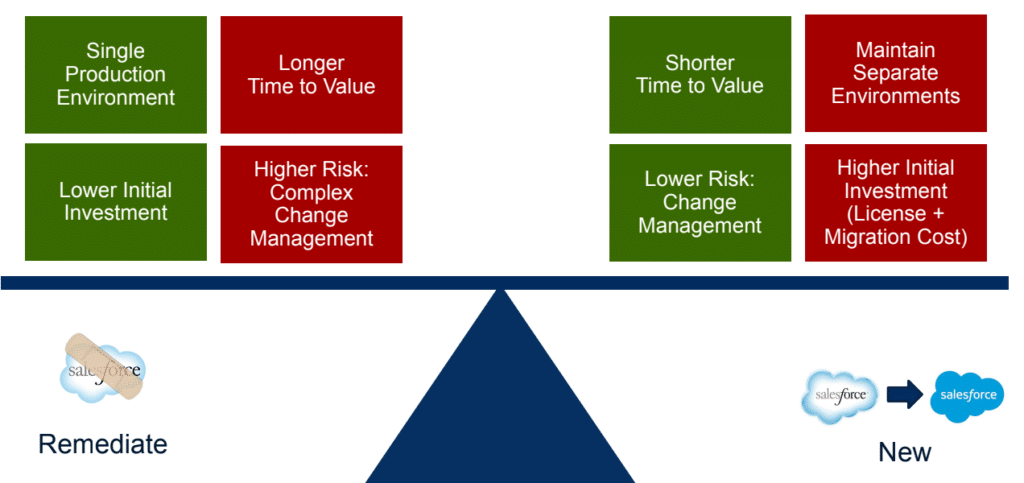
Remediating an existing Org involves identifying and addressing issues or inefficiencies within the current Org. This can include cleaning up data, streamlining processes, and optimizing configurations. The advantage of this approach is that it allows organizations to build on their existing investment in Salesforce and avoid the costs and complexities of starting from scratch. However, it can be a time-consuming and resource-intensive process, particularly if the Org is large or complex.
Starting a new Org, on the other hand, offers the opportunity to design and implement a solution that is specifically tailored to the organization’s needs and goals. This can involve taking advantage of new Salesforce features or customizing the platform to meet unique requirements. The downside is that it requires a significant investment of time and resources, including migrating data and training users on the new system.
Salesforce Org Considerations Questionnaire
Here Salesforce org consideration questionnaire for Business consideration and technical considerations.
Salesforce Org Considerations Framework
This framework and the output of this engagement are meant to assist in giving a directionally correct indicator weighing the pros and cons of each approach. Producing a time & cost estimate as well as an implementation plan is outside the scope of this exercise.
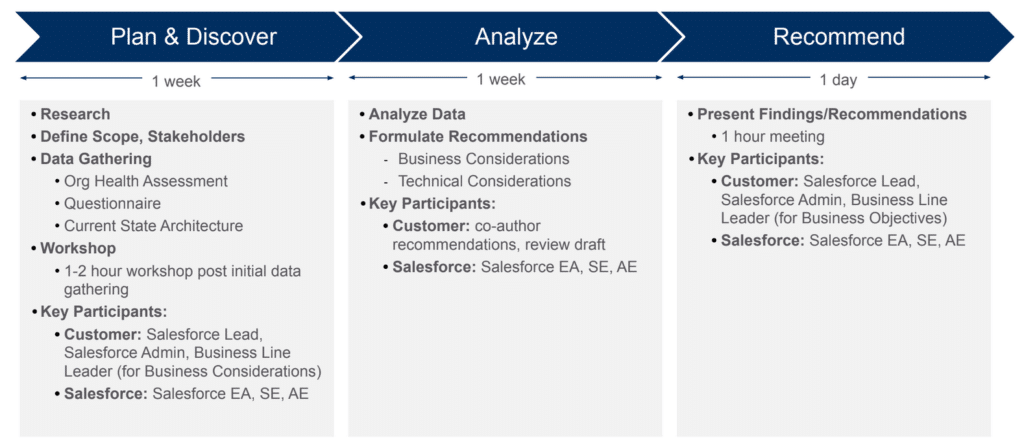
Sample Org Considerations &Recommendations
Check the video for Sample Org Considerations & Recommendations.
Summary
Ultimately, the decision to remediate an existing Org or start a new one should be based on a careful assessment of the organization’s needs, goals, and resources. It’s important to weigh the pros and cons of each approach and consider factors such as the complexity of the existing Org, the level of customization required, and the organization’s budget and timeline.

